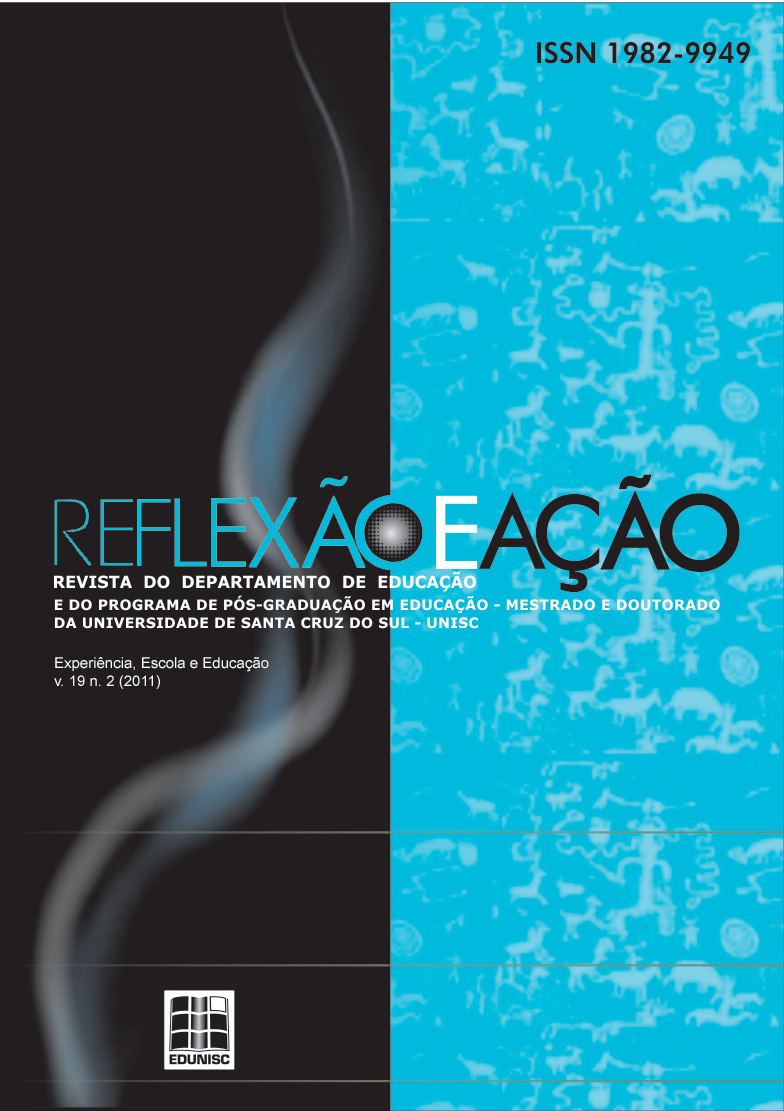EXPERIENCE, BODY AND MEMORY IN SCHOOL – REFLECTIONS ON THE TEACHING OF VISUAL ARTS FOR CHILDREN
DOI:
https://doi.org/10.17058/rea.v19i2.2080Keywords:
Artes Visuais – Criança – Corpo – Cultura – ExperiênciaAbstract
The separation of body and spirit, body and mind experienced by western culture perpetuates denial of embodiment and expression, following and promoting the separation and estrangement between the observed and observer, between Man and Nature. The body, which has been forgotten by the adults at school, is the object of knowledge and learning for children. Contrary to conventional educational forms, the body needs to take and hold other school spaces, increasing the materialization of our desires and possibilities of becoming the world. Trying to understand the issues of embodiment and the Arts at school realized experiences of teaching with research (2007-2009), with students of elementary school of Pelotas, Brazil, in the discipline of Visual Arts. I looked through the artistic process of drawing with chalk on the floor, enabling experiences of being in space and not being in it, as proposed by Merleau-Ponty (1989). In the artistic productions that have made the body and the manner of acting and body movement in the schoolyard, children have reaffirmed the proposition's author. Children are formed in the psychic space of their culture, in touch with people and with pedagogical proposals circulating in the school environment. Thus, there is the experience, students become belonging to a particular culture produced at the time actually experienced it, according to the relationships established among themselves, peers and teacher. Supporting me in Brandão (2008), Josso (2004) and Maturana (2004) long to reflect on the questions of experience and memory, issues considered relevant to the question of teacher education and teaching practices in visual arts.Downloads
Downloads
Published
How to Cite
Issue
Section
License
The submission of originals to this journal implies on the transference, by the author(s), of the printed and digital publishing rights. The author´s rights to the published articles are the author´s, the journal has the rights over the first publication. The author(s) can only use the same results in other publications, indicating clearly that this journal was the original publisher. Since we are an open access journal, the free use of articles is permitted for educational and scientific applications, as long as they inform the source according with the CC-BY license from Creative Commons.


